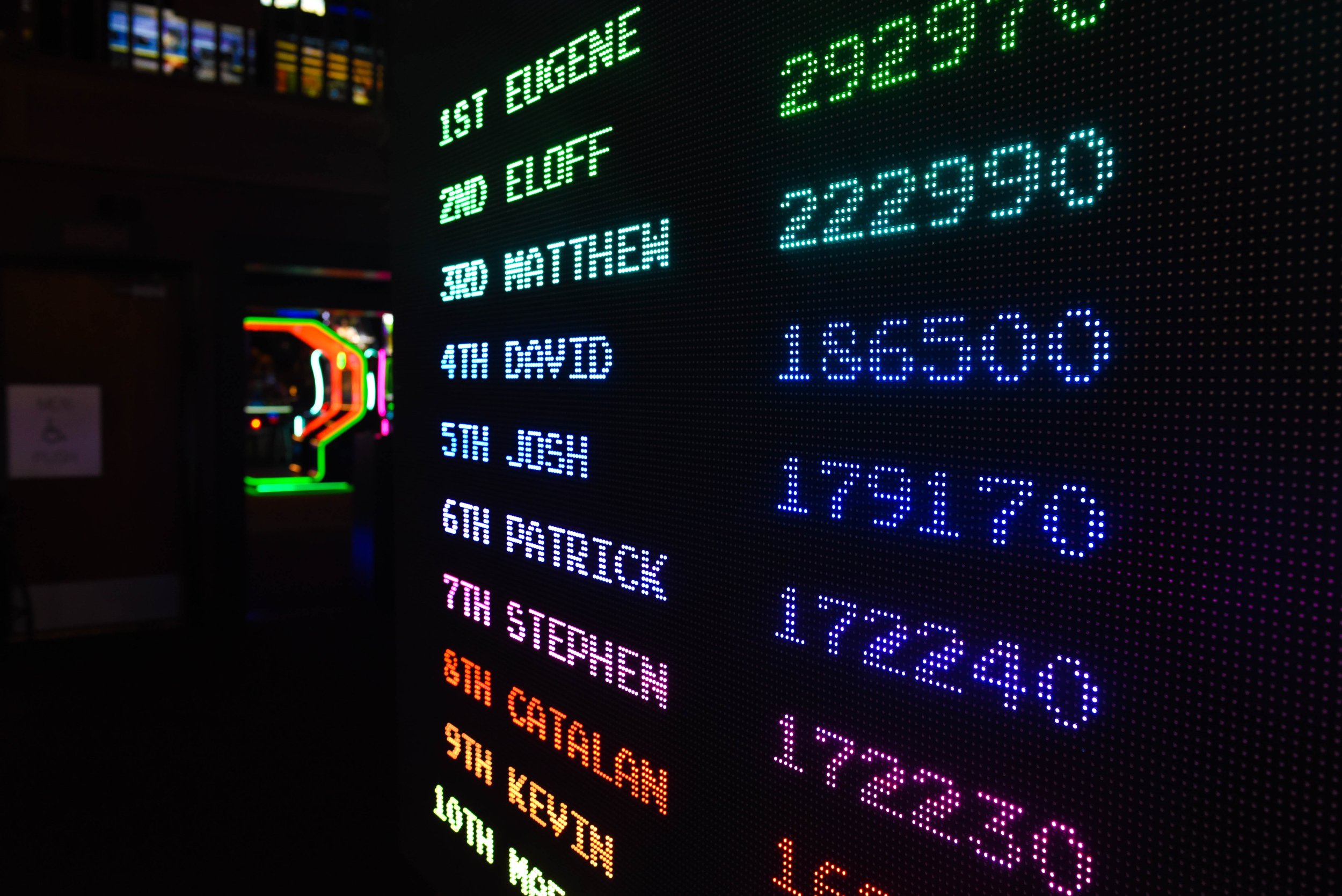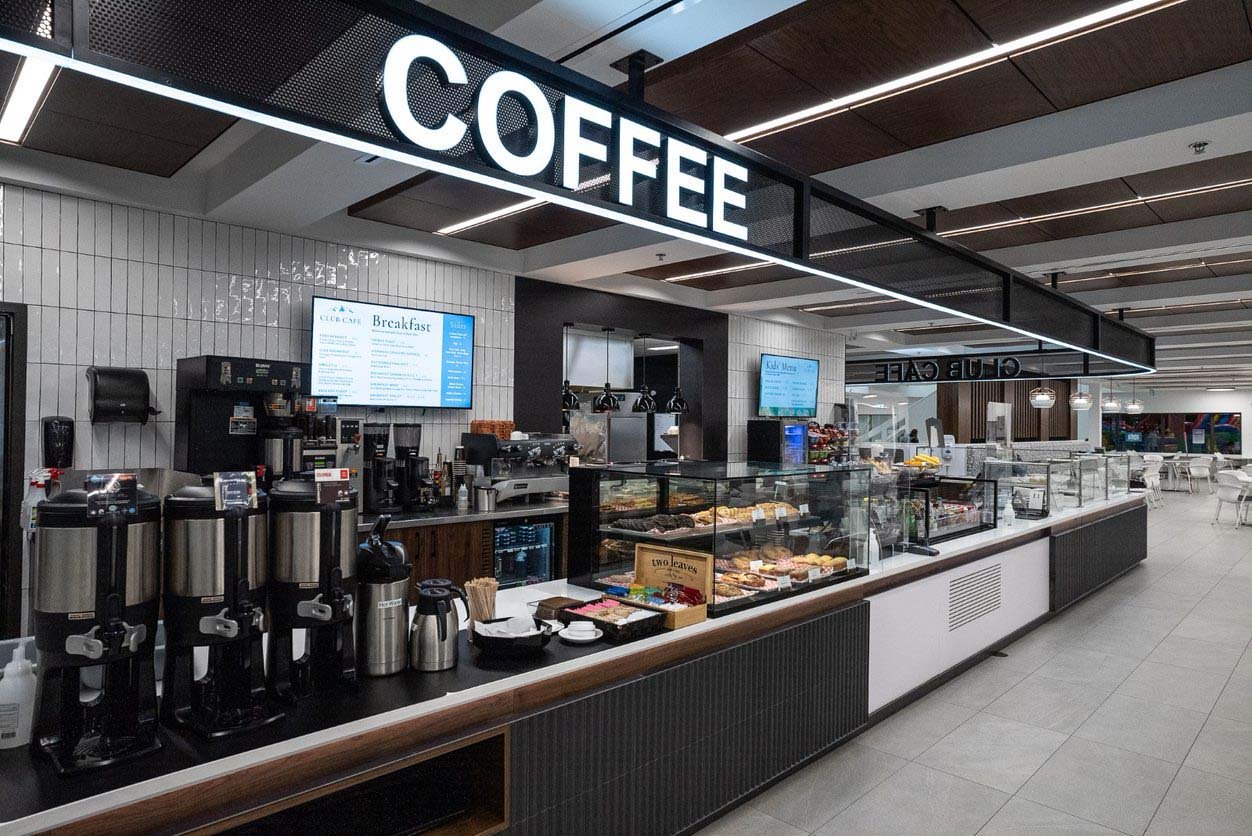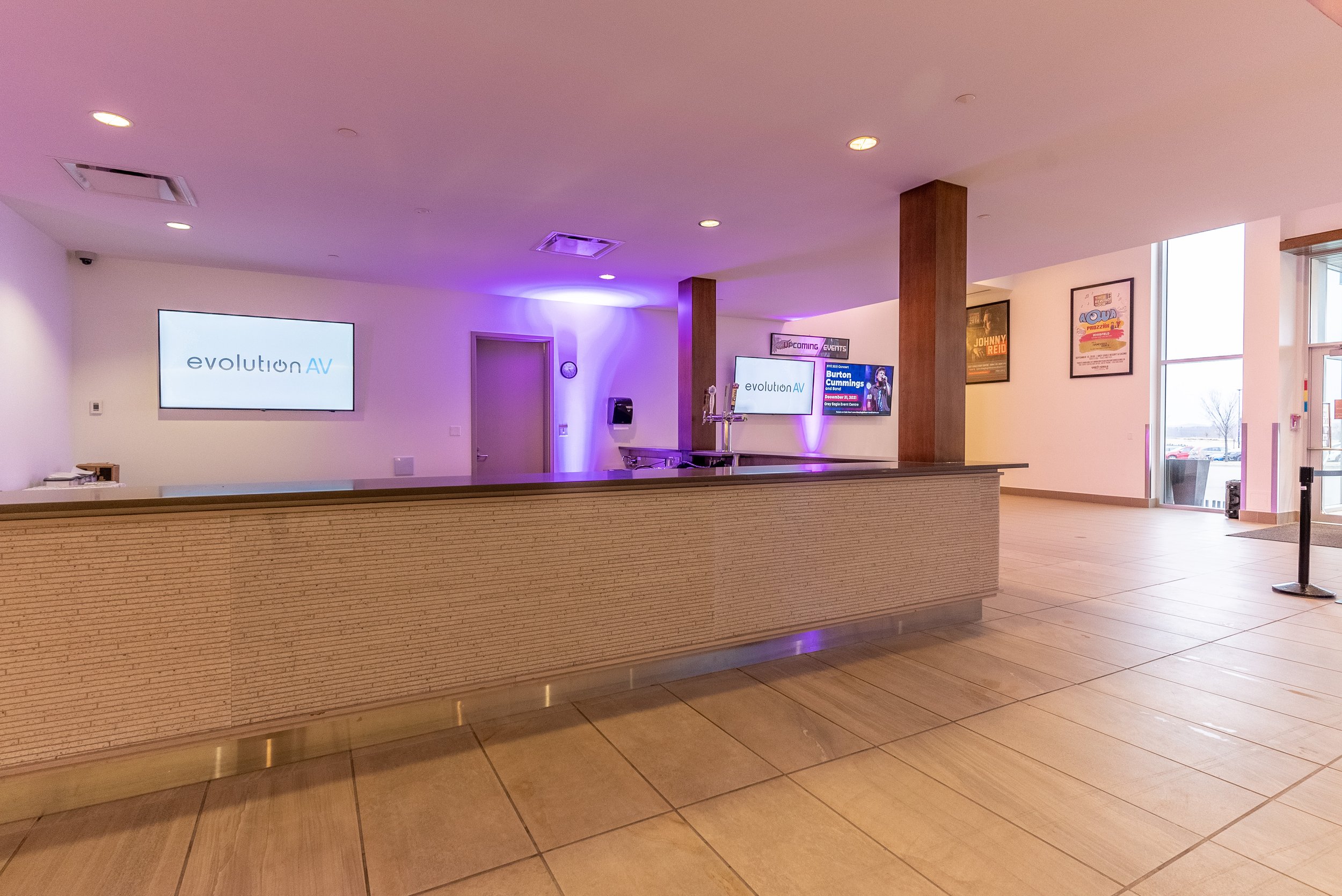The Ultimate Guide to Digital Signage
Digital signage may be the most ubiquitous thing you've never noticed. It can take many forms, from a scrolling stock ticker on the side of a building to the menu at your local quick-serve restaurant. Digital signage goes far beyond billboards and menus—it can engage with the world around it, providing far more immersive experiences than any normal sign ever could.
What is Digital Signage?
At its core, digital signage is using displays, usually similar in appearance to TVs, that are designed to broadcast information in public. Early forms of digital signage used dot-matrix displays (pictured below), but as technology has improved LCD and LED displays have become more common.
Digital Signage Displays
Many large TV manufacturers also make displays for digital signage. However, there are a few factors that make them different than TVs for the home. Digital signage displays are designed to run for much longer than consumer TVs, and show static images without risking any burn-in. Many displays are optimized for playing either 16 or 24 hours a day, 7 days a week. With features like glass front panels, IP5x Dust-Proof Certification and built in levelling sensors, commercial displays are often built to withstand more wear and tear as well.
Digital signage installations at Grey Eagle Resort & Casino in Calgary.
We work with major manufacturers like Sharp NEC, Samsung, LOFT, Sony, and LG, and take brightness, durability, connectivity needs, and the operating environment into account when choosing displays for each project. For more basic applications, we’ll often suggest a display with a built-in signage player. For more scalable and advanced use cases, we'll typically pair displays with a purpose-built media player or PC to drive content.
Digital Signage Players
To understand the benefits of an external digital signage player, it's important to know how content is usually formatted for digital signage. There are two main subtypes of digital signage content: static and interactive.
Static content is content that doesn't need to change quickly or respond to customer interactions. These are usually formatted as still images, or looping videos. Common uses for static content include menu boards and digital posters/advertisements.
Interactive content, on the other hand, requires the use of a processor to function properly. Uses like wayfinding, interactive maps, conference scheduling, or real-time information like transit arrival times requires a connection to external equipment or software. These applications often use a web format, like HTML, but can also use applications developed in engines like Unity. For these use cases, a standalone digital signage player or computer is used.
Digital signage players can also be useful for large networks of displays, even if they are showing static content. By using a digital signage player with a network input, all signage can be changed from one location. This can be useful for digital billboards, advertisements, and notice boards.
We partner with vendors like Brightsign, Crestron, SpinetiX, LG, Kramer and Samsung to provide networked media players and content management systems for more advanced digital signage roll outs.
What can I do with Digital Signage?
The most basic application for digital signage is simply to replace existing print signage. Things like restaurant menus, theater showtimes, and billboards can all be modernized with digital signage. Where digital signage starts to shine, however, is in more interactive applications. A digital menu, for instance, can automatically switch from a breakfast to lunch menu without any physical interaction. Digital advertising displays, like billboards, can also be used to allow easy, hassle-free updating and generate revenue.
Billboards also present an interesting case—using sensors and internet connectivity, ads can react to the world around them. This VIA Rail billboard, for instance, uses live traffic between Toronto and Ottawa to present taking the train as an alternative to driving.
Another new development is in interactive digital signage. This is most commonly used in places like shopping malls to provide interactive maps. Interactive signage can take other forms, however. The systems below that we designed and installed for a real estate developer’s sales experience center, for instance, use LOFT Interactive Displays to allow customers to interact with floorplans and design palettes.
LOFT Interactive Displays at RNDSQR’s Sales Experience Center in Calgary, AB.
A Couple Things To Keep In Mind
Brightness
One of the most important factors to consider is your display brightness. Screen brightness is measured in nits—a measurement of light from a particular area. Specifically, it's a measurement of candela per square meter—so if you want an estimate, just imagine 43,723 candles jammed into your average TV. A good rule of thumb is that any screen in direct sunlight will need to be at least as bright as a cellphone (the iPhone 12 has a peak brightness of 625 nits).
Getting Content to Your Signage
Depending on your use case, you may want interactive signage to provide a more engaging experience. Remember that interactive applications will require more processing power, and likely need a separate control unit. Some commercial displays now have an Open Pluggable Specification (OPS) port, allowing users to slot load a media player or computer directly into their display, without having to run any cables.
You may want to have a simple , welcoming display in your business, like we have in our offices at Evolution. We use displays with wide viewing angles that give them great visibility from around the office, and built-in signage software that makes it super simple to set up with our existing content and videos.
Beyond the Screen: Video Walls
Commercial displays are commonly available in sizes up to 98", but sometimes that isn't enough. For more advanced installations, you can use video walls: multiple displays linked together to act like one really big display. There are two main ways to accomplish this: arranging multiple LCD or LED panels together, or using direct view LEDs.
A LCD video wall uses multiple commercial LCD displays, all connected to a video wall controller. These displays are extremely similar to the commercial displays that we’ve been discussing so far, but they’re often designed with extremely slim bezels so that they can fit together with minimal gaps in the image. These displays are connected to a video controller that splits the incoming video signal, and sends it over separate connections to the individual LCD panels. These types of systems use multiple HD displays, so they’re great for close range viewing; however, the LCD display panels will always have bezels (however small) that disrupt the picture.
Direct view LED walls, on the other hand, use panels full of individual LED lights that are fastened together to create one large seamless viewing area. These installations are commonly used in arenas, digital billboards, and more recently, as backdrops for film and television productions.
A video wall in the lobby of 103 Downtown in Edmonton, installed by Evolution AV.
Building a video wall can be much more complicated that traditional single-screen signage. While many commercial displays have built-in media players, video walls require a media player and a specific video wall processor. However, this additional complexity comes with added functionality. Purpose-built video wall processors often allow for single-source video wall usage, as well as picture-in-picture functionality and the ability to switch between multiple sources for added flexibility.
Video walls can also be built in different shapes and configurations. This installation at Matthew Knight Arena in Oregon uses flexible LED panels to create a unique fan experience as players exit the locker rooms.
The Nitty Gritty of Video Walls: Pitch and Resolution
How far are your viewers going to be from your signage? This is an important factor in determining the pitch of your digital signage. Pitch is the distance between each individual pixel on the display. Standard LED panels have approximately 3.9mm between each pixel, and a recommended viewing distance of between 16 and 24 feet. Any closer, and individual pixels can become visible to the viewer. You can move to products with looser or tighter pixel pitches to meet your required viewing distance.
Pitch also has a secondary effect (depending on the full wall size): defining resolution. Individual panels for large installations, like the wall we recently built for Theatre Calgary, have a 128x128 pixel resolution. This might not seem like a lot, but the whole wall boasts a near 4K resolution!
Whether you want to modernize your current signage, or are looking for a jaw-dropping installation, we can help. We've built digital signage and video walls around the country, and can design a solution that best fits your needs and your budget. To see more digital signage in action, check out some of our recent project highlights from Spiritleaf and the Calgary Winter Club.
Interested in learning more? Get in touch to start a conversation about how we can help you use digital signage to communicate your message!






